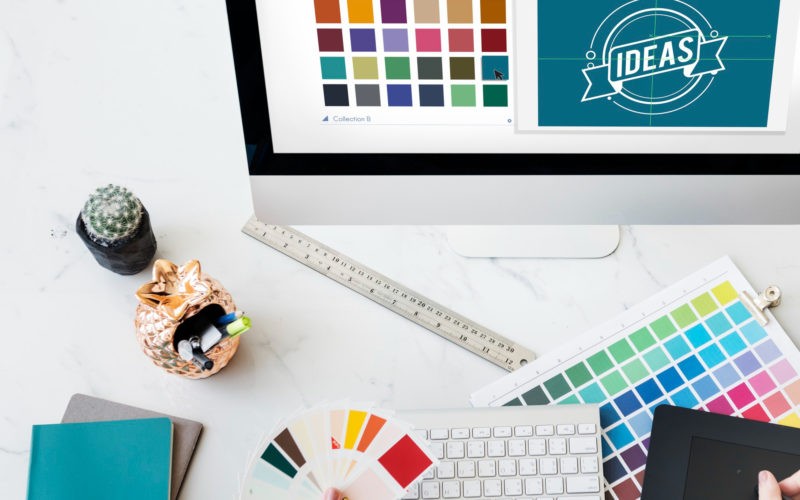A logo is more than just a visual mark; it represents the essence of your brand. It’s the initial impression potential clients have of your business and plays a huge part in how your brand is seen. A well-designed logo can convey the essence of your business, its values, and its character. Whether you’re a startup or an established business looking to rebrand, creating a logo that stands out and resonates with your target audience is essential. Here is a step-by-step guide to help you create a compelling business logo:
1. Understand Your Brand Identity
Before diving into the design process, it’s crucial to have a clear understanding of your brand. Your logo ought to mirror the center substance of your business, so begin by characterizing your image personality. Pose yourself the accompanying inquiries:
• What is the mission of your business?
• What are the core values of your business?
• Who is your target audience?
• What emotions or feelings do you want your brand to evoke?
By answering these questions, you can develop a clear vision of what your logo should represent. For instance, a tech company might emphasize innovation and technology, while a bakery might focus on warmth and tradition.
2. Research the Competition
Research your competitors’ logos. This doesn’t mean you should copy them, but understanding industry trends can help you create a logo that stands out while fitting within your market. Observe what works and what doesn’t. Are there common elements, like colors or shapes, that are effective in your industry? On the other hand, consider how you can differentiate your logo from others to ensure it’s unique and memorable.
3. Choose the Right Design Style
The design style you choose to create a logo will set the tone for your brand. Here are a few popular styles to consider::
- Classic: A timeless design that avoids trends, ensuring your logo stays relevant for years.
- Modern/Minimalist: Focuses on simplicity with clean lines, minimal details, and often, a lot of white space.
- Vintage/Retro: Ideal for brands that want to evoke nostalgia or convey a sense of authenticity.
- Fun and Quirky: Bright colors, playful typography, and whimsical designs are perfect for brands with a cheerful, creative personality.
- Handcrafted/Artistic: This style suggests a personal touch, making it ideal for businesses like artisan shops or creative studios.
The style you choose should align with your brand identity and resonate with your target audience.
4. Select the Right Colors
Colors play a critical role in your own logo design as they evoke emotions and convey meanings. Each color has its own associations:
- Red: Passion, energy, excitement.
- Blue: Trust, professionalism, calmness.
- Green: Growth, health, nature.
- Yellow: Optimism, happiness, warmth.
- Black: Sophistication, elegance, authority.
Consider the psychology of colors and how they align with your brand’s values. Additionally, think about how your color choices will look across different mediums, such as print, digital, and merchandise.
5. Choose the Right Font
Typography is a crucial part of your logo, especially if it includes the name of your business or a tagline. The font you choose should be legible and appropriate for your brand’s personality. Here are some common font categories:
- Serif: Traditional and trustworthy (e.g., Times New Roman).
- Sans-serif: Modern and clean (e.g., Helvetica).
- Script: Elegant and sophisticated (e.g., Brush Script).
- Display: Unique and eye-catching, often custom-designed for a specific brand.
Ensure that the font you choose is versatile and works well in various sizes and formats.
6. Incorporate Relevant Icons and Symbols
Icons and symbols can add meaning to your logo, helping to convey your brand’s message quickly and effectively. However, it’s important to use them thoughtfully. An icon should be simple, recognizable, and relevant to your business. For example, a camera icon might be appropriate for a photography business, while a leaf could represent an eco-friendly brand.
7. Create Several Drafts
Designing a logo is an iterative process. Start by sketching out different ideas and concepts. Don’t hesitate to experiment with various combinations of icons, typography, and colors. Creating several drafts will allow you to explore different possibilities and refine your ideas. This stage is about creativity and exploration.
8. Look for Feedback
Once you have a few strong logo concepts, gather feedback from others. This could be from colleagues, friends, or even members of your target audience. Ask them what the logo makes them think of, how it makes them feel, and if they believe it represents your brand. Constructive criticism can be invaluable in refining your design.
9. Finalize and Refine Your Logo
Based on the feedback, choose the best logo concept and start refining it. Pay attention to details like alignment, spacing, and proportion. Ensure that the logo is scalable, meaning it should look good whether it’s printed on a business card or displayed on a billboard. It should also be versatile, working well in both color and black-and-white formats.
10. Protect Your Logo
Once your logo is finalized, it’s important to legally protect it. Trademarking your logo will ensure that your design is exclusively yours and prevent others from using it. Consult with a legal professional to understand the process and ensure that your logo is protected.
11. Integrate Your Logo Across All Branding
Your logo should be consistently used across all your branding materials. This includes your website, social media profiles, business cards, letterheads, and packaging. Consistency in using your logo helps build brand recognition and loyalty over time.
Conclusion
Creating a business logo is a strategic and creative process that requires careful consideration of your brand identity, industry, and target audience. By following these steps, you can create a logo that not only stands out, but also effectively conveys the essence of your brand. Remember, your logo is a long-term investment in your brand, so take the time to get it right.












